Naqshe Rostam, Iran (Age, Map, Inscription, Photos)
Known by many names and famous as the Royal Necropolis Of The Achaemenid Dynasty, Naqshe Rostam is another important historical site situated in the center of Iran. This place holds great significance and has witnessed many events and actions throughout the history of Iran and different empires. The Archaeological site of Naqshe Rostam is a popular attraction for many tourists and history buffs who want to explore the ancient Persian empires.
In this article, we will check out the Naqshe Rostam sitemap and explore its beauties.
Naqshe Rostam
An ancient necropolis near Persepolis, Iran, Naqsh-e Rostam is a valuable archaeological site that contains a collection of rock reliefs and tombs that date back to the old centuries of Iran, such as the Achaemenid Empire.
Naqshe Rostam is one of the most important locations that tourists visit. Many people describe Naqshe Rostam as a valuable introduction to the history and culture of Iran because it provides great insights into the old dynasties of Iran.
Naqshe Rostam is a must-see destination that can be ideal for having a meaningful and memorable journey inside the historical cities of Iran.
Naqshe Rostam History
Naqshe Rostam’s History goes back to the old days of Iran when the empire of Iran was famous all around the world. So, Naqsh-e Rostam’s history spans centuries and consists of different civilizations.
The early rock reliefs of Naqshe Rostam are believed to belong to the Elamite period, which shows scenes from Elamite mythology and rituals.
Nevertheless, the most important part of its history is its connection with the Achaemenid Empire because the Naqshe Rostam sitemap served as a great necropolis for the kings of the Achaemenid dynasty and their nobles. Overall, the Naqsh-e Rostam Map shows that this place has a rich history and cultural values.
Who Is Rostam?
Rostam is a well-known figure in Persian mythology and literature. He is one of the main characters in the stories of Shahname written by Ferdowsi. His bravery and manhood are famous in Shahname and are two traits of his personality. Rostam’s adventures are countless and span over several generations.
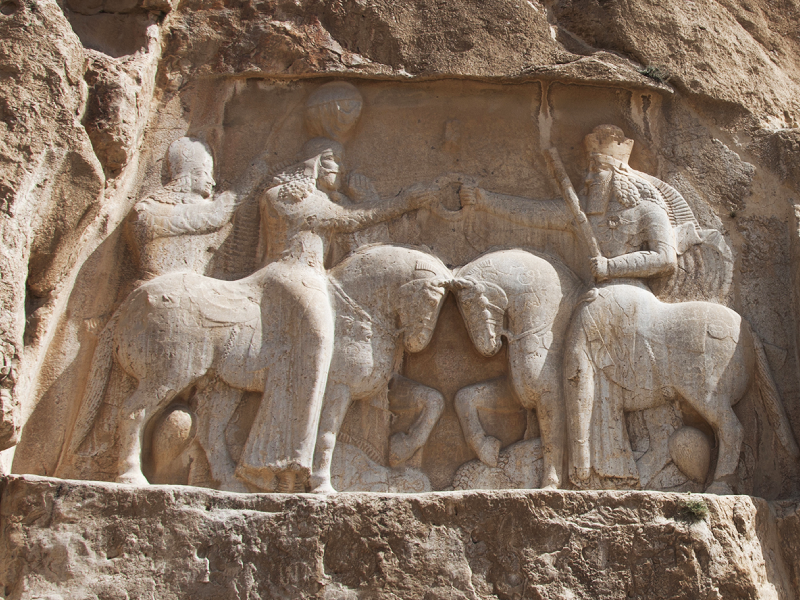
He is one of the central characters of various battles, quests, and heroic feats. Rostam is a symbol of an ideal Persian hero well-known for his intelligence, bravery, manhood, and huge influences on the world of literature inside and outside of Iran.
Naqshe Rostam Location
Naqsh-e Rostam’s Location is in Iran in the Fars province. This province is known for having a variety of historical attractions and is considered the capital of history and culture among other cities and provinces of Iran.
Naqshe Rostam’s address is approximately 6 kilometers northwest of the Persepolis. This means that visitors can easily access both sites without any difficulty (Location on map).
Naqsh-e Rostam’s location is also near the city of Marvdasht, which travelers and visitors can go there by road, and is also a popular tourist destination. Visiting both Naqsh-e Rostam and Persepolis is the ideal trip that you can enjoy.
Naqshe Rostam Archaeology
Naqsh-e Rostam has been a case study for many years, and it has witnessed many excavations over the years. Many archaeologists and researchers have explored this site and conducted many investigations to uncover the truth behind the historical significance of this attraction while understanding the cultural context of the site.
The first important archaeology that led to major understandings was in 1923 by the German archaeologist Ernst Herzfeld. Naqshe Rostam was also excavated in later years for several reasons, which happened from 1936 to 1939 by a team from the University of Chicago that was led by Erich Schmidt.
Naqshe Rostam Sitemap
Naqshe Rostam Map shows that this area is very large, and exploring it will provide an adventurous journey.
The main highlight of the Naqsh-e Rostam map is its collection of rock-cut tombs, which are carved into the cliff face. Moreover, if you explore the Naqsh-e Rostam Map, you can find many rock reliefs, as this place is adorned and filled with many rock reliefs that demonstrate scenes from epic battles and legendary figures.
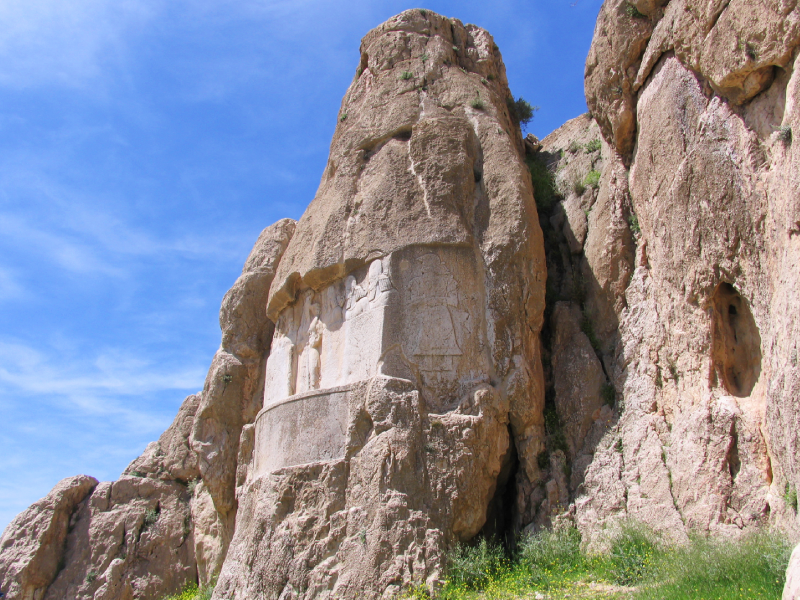
Additionally, the Naqsh-e Rostam sitemap also provides staircases and platforms that visitors can easily access to the tombs and reliefs for seeing them from a closer distance.
Naqshe Rostam Inside
Naqsh-e Rostam is a great location to explore the history of Iran. Naqsh-e Rostam’s inside is filled with different rock-cut tombs and reliefs that can be very interesting for travelers who are interested in the great culture and history of the Iranian people.
With several renovations, Naqsh-e Rostam has become an ideal attraction that allows visitors to easily explore and observe the different parts of the sitemap. You can use information boards, signs, or tour guides that provide historical pieces of information and cultural context for tourists.
An interesting fact is that most of the reliefs belong to the Sassanid period, and that is why this sitemap is famous for holding great historical information about different eras of Iran. We assure you that exploring this site from close is a unique and different experience.
Naqshe Rostam Tombs
The rock-cut tombs of Naqsh-e Rostam are the main features of this sitemap. Naqsh-e Rostam tombs not only carry centuries of history, but they also show the greatness of Iranian rulers and empires. For example, one of the Naqsh-e Rostam Tombs is the tomb of Darius l, who was famous as the Darius the Great.
Other Naqssh-e Rostam tombs include the Tomb of Xerxes l, which is next to the Tomb of Darius l, the Tomb of Artaxerxes l, another famous Achaemenid King, and the Tomb of Darius ll, who was the grandson of Darius the Great. So, Naqsh-e Rostam Tombs is an example of the grandeur and architectural sophistication of the Achaemenid Empire.
The Cube of Zoroaster
Indeed, Naqsh-e Rostam is a vast site. Another amazing and stunning structure that you can find in the Naqsh-e Rostam sitemap is the Cube of Zoroaster. This building is a square tower that is believed to date back to the 5th century.
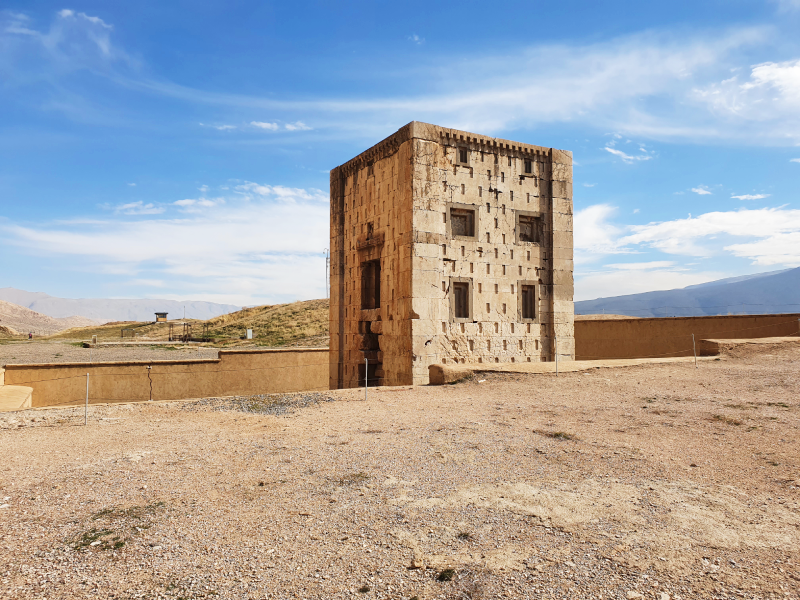
This structure is a mysterious one, and many archaeologists believe that this building could also have been a tomb. Hence, this structure also holds religious and historical significance and is a legacy of the old times of Iran. The Cube of Zoroaster is not very far from the tombs, and visitors can explore it easily.
Naqshe Rostam Meaning
Naqshe Rostam is known by other names in the local communities. Some people call it “Salib,” which is an Arabic word for “Cross”. The reason behind this name is due to the façade of the tombs, which looks like crosses. Hence, the Naqsh-e Rostam meaning itself is “The Image of Rostam” in Persian language.
Actually, this term is considered a compound name that includes the two words “Naqsh,” meaning “image” or “carving,” and “Rostam,” which refers to the legendary figure of Shahname, Persian mythology, and literature.
Naqshe Rostam Age
Naqsh-e Rostam is among the oldest sites in Fars province. This site dates back to the ancient Achaemenid Empire, which was founded by the Cyrus the Great in the 6th century BCE. Hence, the Naqsh-e Rostam Age starts from the reign of Darius l because it was established during that time or shortly thereafter. So, therefore Naqsh-e Rostam Age can be considered to be approximately 2,500 to 2,700 years old.
Naqsh-e Rostam Inscription
Standing as a testament to Iran’s history, Naqsh-e Rostam Inscriptions also had a major role in unpacking the stories behind it. One of the most well-known Naqsh-e Rostam Inscriptions is the trilingual inscription of Darius I, mainly known as the Behistun Inscription.
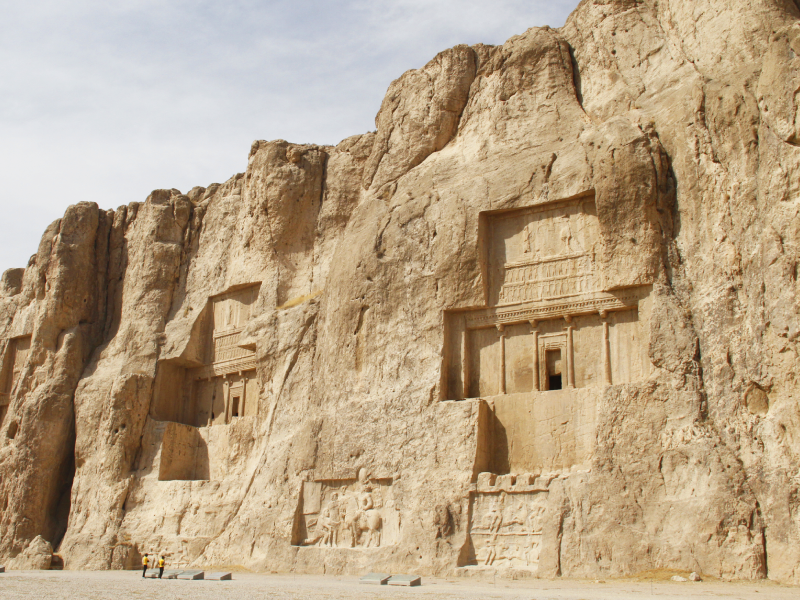
This Naqsh-e Rostam Inscription (Behistun Inscription) was carved into a cliff face at Behistun and includes text in three languages: Old Persian, Elamite, and Babylonian. This inscription was not located directly at the site.
Naqshe Rostam Facts
Naqsh-e Rostam is situated in Shiraz, Iran, and is very close to Persepolis, sitting on a cliff face in the Zagros Mountains.
Naqsh-e Rostam has a connection to both the Achaemenid Empire and the Sassanid Period, making it one of the most important historical sites of Iran.
The rock-cut tombs of the Naqsh-e Rostam are very popular worldwide, and many foreign tourists visit this attraction.
Naqsh-e Rostam is a UNESCO World Heritage Site and is considered an important cultural and historical landmark in Iran.
The process of discovering and exploring the tombs and reliefs of the Naqsh-e Rostam sitemap is all based on historical and archaeological research. Inscriptions found at the site had a major role in discovering the stories behind this site.
Final Words
Naqsh-e Rostam Map is one of the most important tourist attractions that carries the history of centuries and is a popular destination for those who want to learn more about Iran’s old empires and dynasties. Naqsh-e Rostam’s address is in the Fars province near other attractions such as Persepolis.
So, if you want to visit Fars province, make sure to visit its historical sites and attractions for a unique experience.
Are you planning to travel to Iran and looking for an Iran resort? Consider Matinabad Eco-resort.
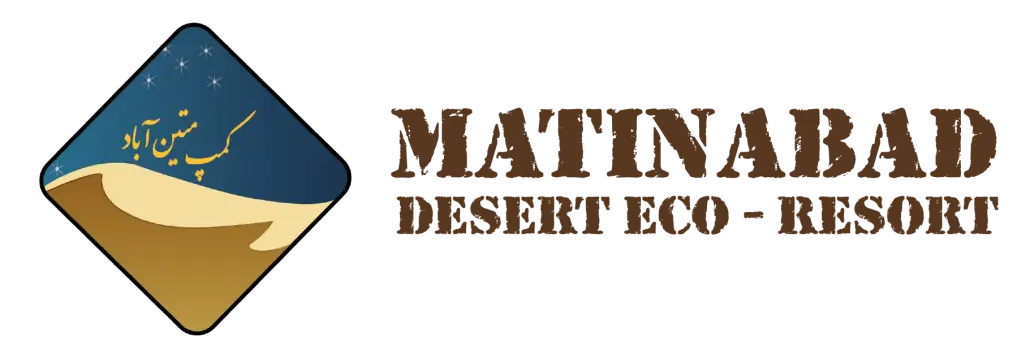




Leave a Reply
Want to join the discussion?Feel free to contribute!